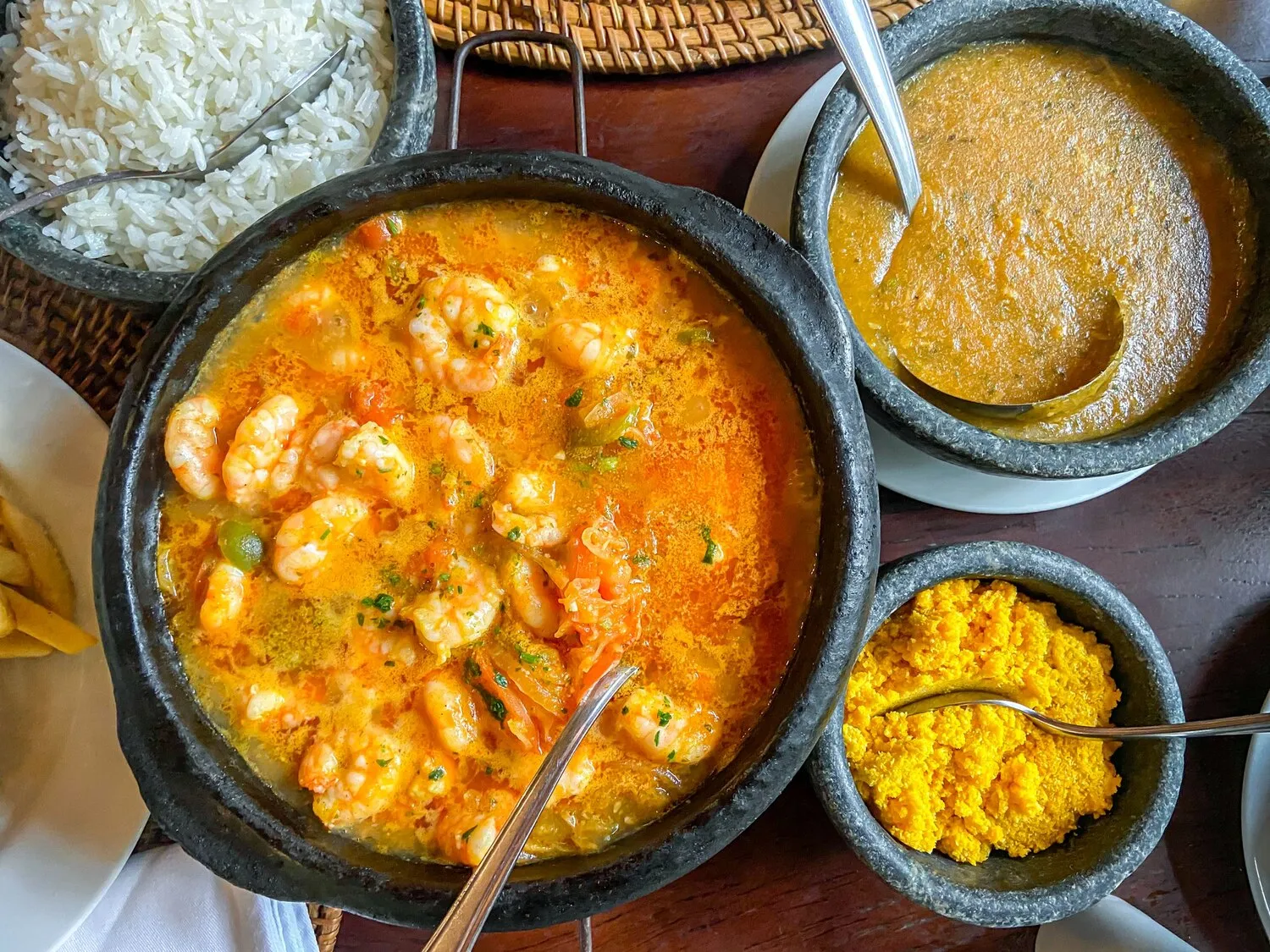
Moqueca Baiana
A traditional Bahian seafood stew cooked in coconut milk, dendê oil, and various vegetables.
Nutrition Facts
* The % Daily Value (DV) tells you how much a nutrient in a serving of food contributes to a daily diet. 2,000 calories a day is used for general nutrition advice.
Moqueca Baiana's history is intertwined with the cultural melting pot of Bahia, Brazil. It reflects the influence of Indigenous Brazilian cooking techniques, African ingredients brought by enslaved people, and Portuguese culinary traditions. Indigenous peoples likely created early versions of the stew using local fish and peppers. African influences added coconut milk and dendê oil, while the Portuguese brought tomatoes, onions, and bell peppers.
Moqueca Baiana is more than just a dish; it's a symbol of Bahian identity and a celebration of the region's diverse cultural heritage. It's often served at special occasions and family gatherings, representing warmth, hospitality, and a connection to the past.
Regional Identity
Moqueca Baiana is deeply connected to the state of Bahia. It represents the region's unique Afro-Brazilian culture and culinary traditions, distinguishing it from other regional Brazilian cuisines.
Social Gathering
It is commonly served at family feasts and celebrations, where sharing food is an important aspect of social bonding and cultural transmission.
Religious Significance
Dendê oil, a crucial ingredient, holds spiritual significance in Candomblé, an Afro-Brazilian religion, highlighting the dish's link to cultural traditions.
Moqueca Baiana offers a rich and complex flavor profile, characterized by a harmonious blend of seafood sweetness, creamy coconut milk, and the distinctive fruity heat of dendê oil.
The key flavors are derived from the seafood (typically fish, shrimp, or a combination), which provides a delicate sweetness; coconut milk, lending a creamy texture and subtle sweetness; dendê oil, extracted from the fruit of the African oil palm, imparting a unique reddish-orange hue, a rich flavor, and a slightly smoky note; and the aromatic vegetables like tomatoes, onions, and bell peppers, contributing sweetness, acidity, and vegetal notes. Lime juice adds brightness and balances the richness of the dish. Cilantro provides a fresh, herbaceous counterpoint. Pimenta malagueta (a type of chili pepper) is often used to add heat, further enhancing the complexity.
Quality of Seafood
Use the freshest seafood available. The quality of the fish and shrimp will significantly impact the final flavor of the moqueca.
Dendê Oil Usage
Use dendê oil sparingly at first, as its flavor can be quite strong. You can always add more to taste. Be aware that it can stain, so use caution.
Gentle Cooking
Cook the moqueca over low heat to prevent the seafood from becoming tough and to allow the flavors to meld properly. Avoid boiling vigorously.
Layering Flavors
Build the flavors gradually by sautéing the aromatics first, then adding the vegetables, seafood, and finally the coconut milk and dendê oil.
Explore additional Stew dishes and restaurants
Explore StewDiscover top dining spots and culinary experiences in Salvador.
Explore SalvadorLearn more about the food culture, restaurant scene, and culinary heritage of Brazil.
Explore Brazil
